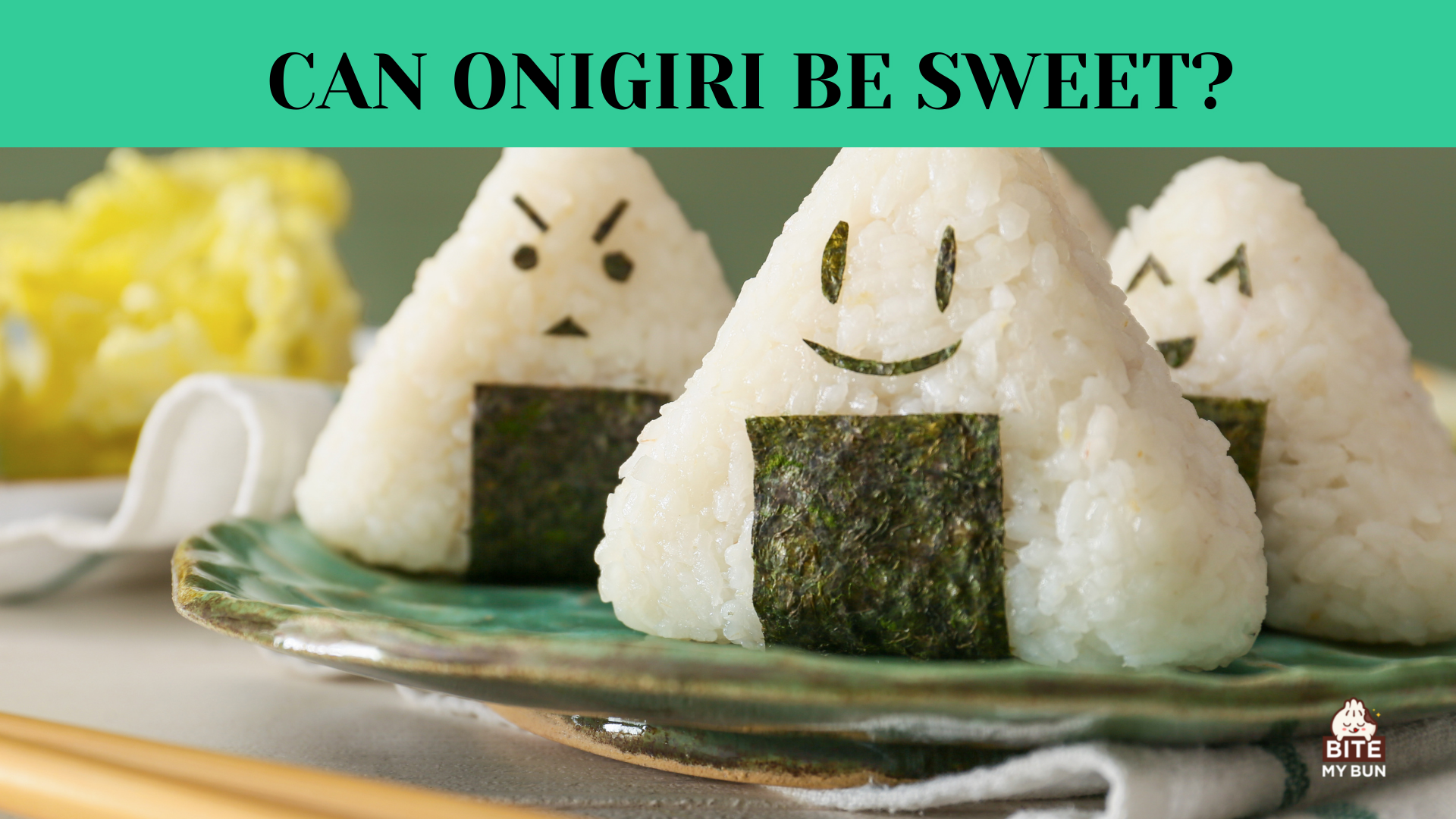Can onigiri be sweet? There’s nothing to stop you!
Onigiri, or Japanese rice balls, is a simple, yet tasty Japanese dish known for portability and convenience. You can eat it on the go and share it with other people.
It is a common lunch for busy professionals and students alike. For the majority of locals, onigiri is a savory food, but can you prepare it with sweet fillings?
If you do that, it would be called ohagi and it’s a type of onigiri.

If you’re preparing triangle onigiri for yourself, then there’s nothing that stops you from using sweet fillings. You can put whatever fillings you want to your onigiri and enjoy it as a lunch or a quick snack.
However, onigiri is usually a savory food, and most people expect it to have a savory filling.

Check out our new cookbook
Bitemybun's family recipes with complete meal planner and recipe guide.
Try it out for free with Kindle Unlimited:
Read for freeIn this post we'll cover:
What is onigiri?
Onigiri (sometimes also called omusubi or nigirimeshi) is a type of rice dish from Japan. Rice balls are manually formed into either triangular or cylindrical shapes and stuffed with precooked fillings.
Think of it as bao, but made with rice and not steamed bread. Japanese rice balls are a popular convenience store food and sandwich alternative in the country.
Typically, a single serving of Japanese rice ball has about a half cup of rice. The cook can make the rice ball bigger or smaller, depending on how big the filling would be.
An onigiri serving can be very filling, depending on the preferred size of the rice ball. But one thing’s for sure, most people in Japan enjoy onigiri more than sandwiches.
Here are the best rice cookers for preparing your onigiri rice reviewed
Are onigiri fillings required?
No, you don’t need to add fillings inside the rice to make it an “onigiri.” Basically, an onigiri is just a compressed unseasoned rice ball with a small nori sheet under, used as a handle.
In today’s Japanese cuisine, most onigiri recipes include adding fillings to make things more exciting.
In fact, there are traditional onigiri recipes where only two ingredients are used: salt and rice. This type of onigiri is called shio musubi, wherein cooked rice is shaped into a triangular shape.
All you have to do is sprinkle some salt on top of it, and you got a shio musubi.
Shio musubi was popular during the feudal era. This recipe gave travelers and samurai an option to carry and enjoy well-cooked rice while traveling.
These days, onigiri without filling doesn’t mean that it has to be plain and simple. Rice flavorings are used to make the rice flavorful even if nothing is stuffed on it.
Did you know you can also grill onigiri? It’s called Yaki Onigiri and it’s the perfect Japanese grilled rice ball snack for drinks
Can you add sweet fillings to your onigiri?
Most Japanese cooks use savory food as fillings when preparing onigiri. Salt (and other salty fillings) help preserve the rice, which helps the rice last longer while traveling.
People won’t scoff at you for offering sugared onigiri, but they might politely decline your offer. But if you dig sweet onigiri, no one would stop you from enjoying it.
The closest thing to a sweet onigiri is various types of wagashi or Japanese sweets. Wagashi recipes like daifuku, dango, and other Japanese sweets are mostly sweets enveloped in mochi, or pounded glutinous rice.
But unlike onigiri, wagashi are more like snacks and not full-meal alternatives.
If you want the idea of cooked rice filled with sweets, you can try botamochi. Botamochi is a sweet rice ball covered with red bean paste.
Just like onigiri, it can be shaped into a tiny cylindrical shape, but not triangular.
Final thoughts
Onigiri can be a versatile way of enjoying food on the go. Fundamentally, you can use any fillings that you like with your own food.
Alternatively, you can skip the filling altogether and eat it with menial seasoning (like salt.)
Fortunately, several Japanese confectionaries can satisfy your sweet cravings, such as daifuku and botamochi.
Also check out this Ensaymada Recipe for Filipino Sweet Buns
Check out our new cookbook
Bitemybun's family recipes with complete meal planner and recipe guide.
Try it out for free with Kindle Unlimited:
Read for freeJoost Nusselder, the founder of Bite My Bun is a content marketer, dad and loves trying out new food with Japanese food at the heart of his passion, and together with his team he's been creating in-depth blog articles since 2016 to help loyal readers with recipes and cooking tips.
